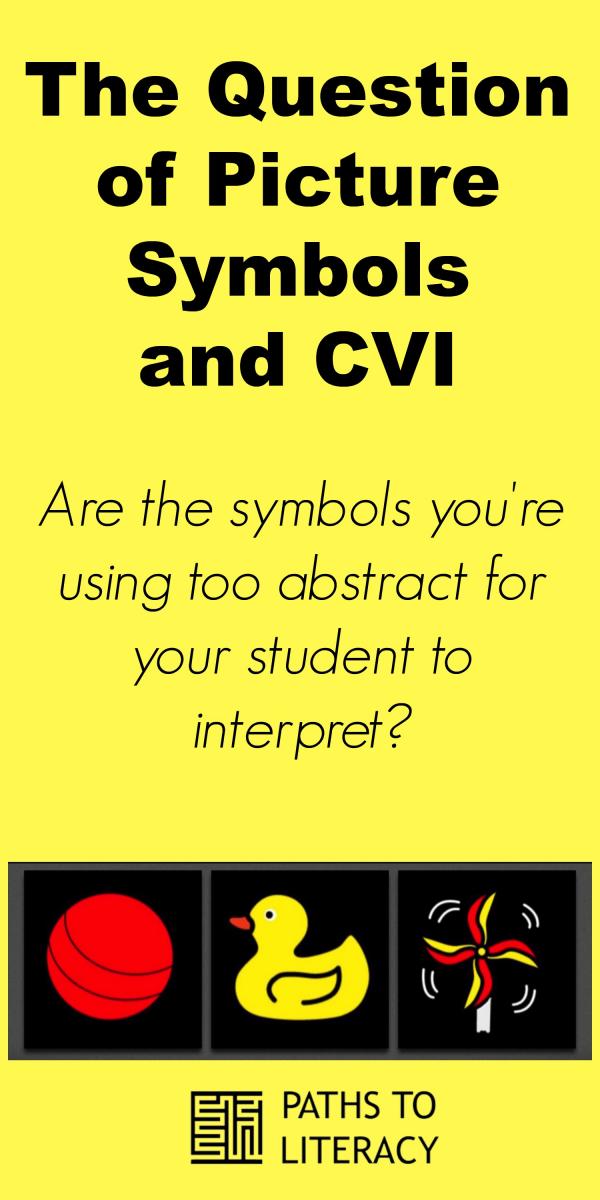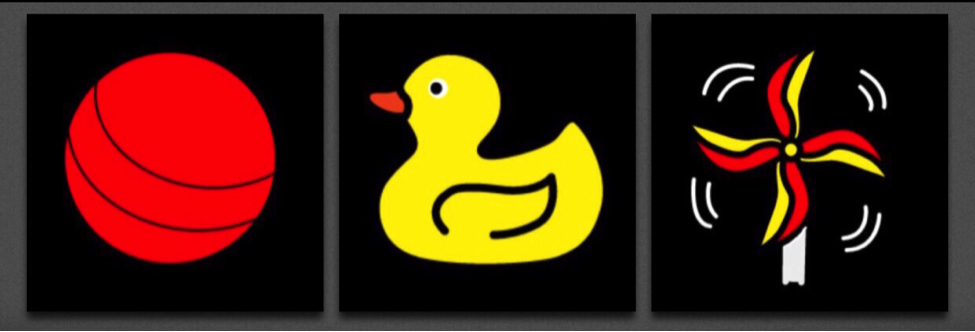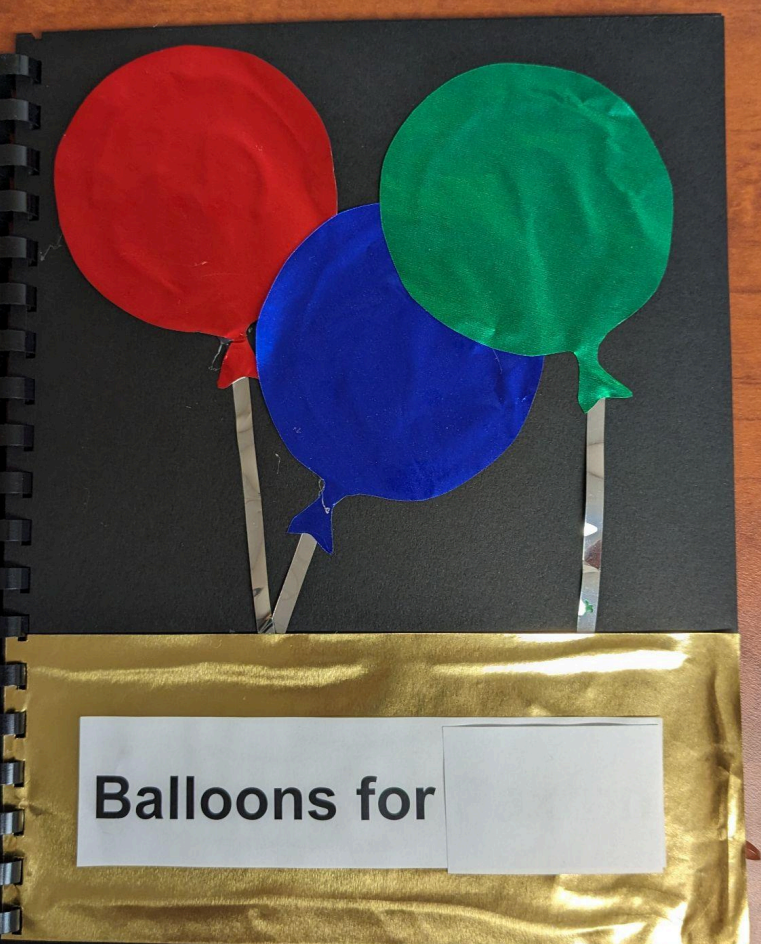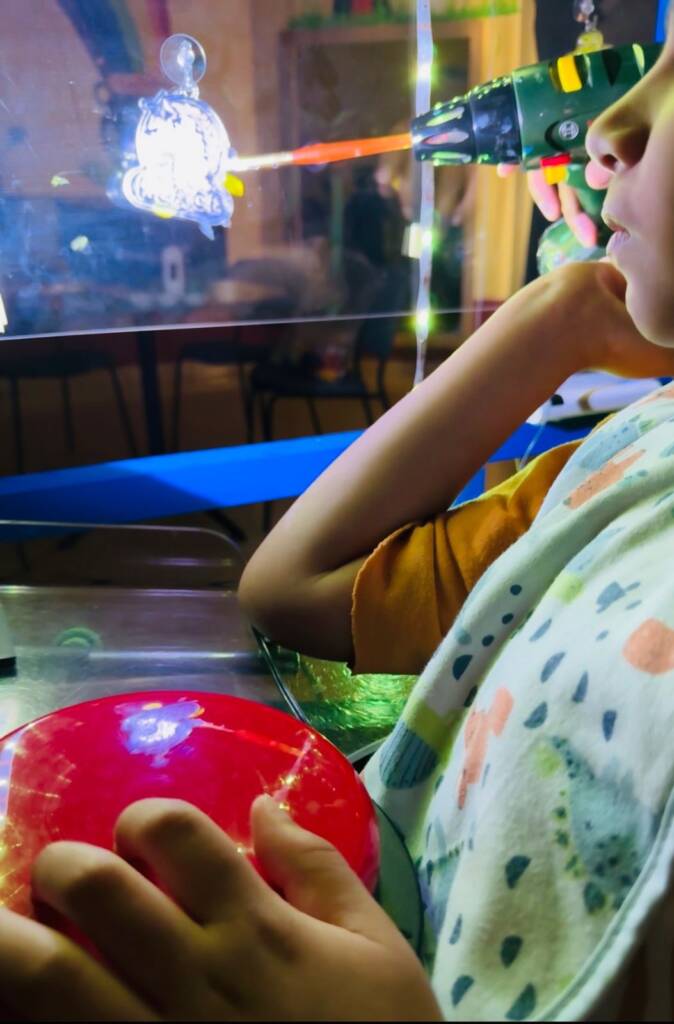Picture symbol programs such as Boardmaker, SymbolStix, LessonPix, etc. are wonderful and very convenient programs for teacher to use to adapt material for students, but have you considered the appropriateness of these programs for our students with cortical visual impairment?
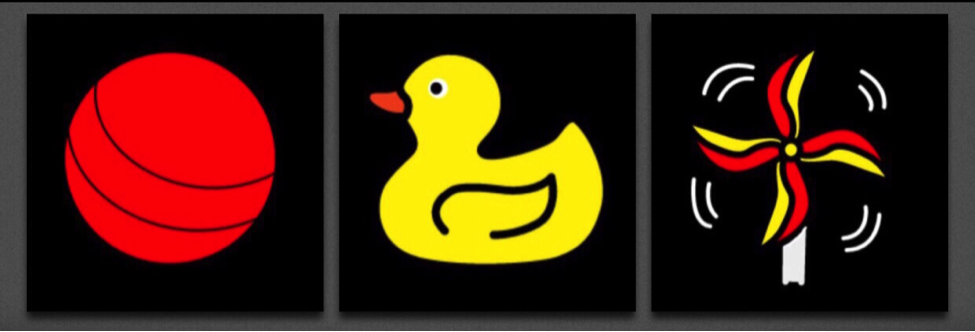
Moving from Three Dimensional to Two Dimensional
For students with cortical visual impairment, making the leap from three dimensional to two dimensional representations can be difficult. We have to consider where the child scores on the CVI Range within numerous CVI characteristics (complexity of object, complexity of array, light, novelty, color, etc). All of these characteristics must be considered when moving the child towards pictures.
Start with a Thorough CVI Assessment
Before determining if a student is ready for pictures, you should complete a thorough CVI assessment. When looking at the CVI Range Rating II Scoring Guide, criteria for pictures is listed in the appropriate CVI characteristic. For example, the scoring guide for .5 in complexity of object states “visual fixations occur (and object discrimination or recognition) on objects that have 3-4 colors/patterns on the surface; 2-dimensional images may be introduced on backlit surfaces.” At this score, we want the student to not only LOOK at familiar objects but to recognize and discriminate them. I think the key words are “recognize and discriminate”. Simply looking toward something is not understanding its meaning or purpose. Once your student is able to identify several familiar objects, they are ready to make the transition from 3D to 2D.
Can the Student Interpret Images?
In Dr. Roman-Lantzy’s new book, Cortical Visual Impairment: Advanced Principles, a CVI 2D Image Assessment is included. She discusses the importance of determining if the student can interpret images and what types of images they can interpret since many worksheets and instructional programs come with abstract images instead of photographs. This is also important when considering the use of picture symbol programs. In order to choose the most meaningful materials to use with our students with CVI, the CVI 2D Image Assessment should be completed. This assessment takes you through the hierarchy of image complexity. There are five categories of images in the assessment: color photographs, realistic color illustrations, abstract color illustrations, realistic black and white illustrations and abstract black and white illustrations.
Be Careful Not to Move Too Quickly to Abstract Symbols
The data from the 2D Image Assessment will provide concrete data on the type of image that is accessible for the student. This assessment, along with the CVI Range assessment, should be used to look at the child’s level across and within CVI characteristics to make decisions for appropriate instructional materials. If the student is at the photograph level, then black and white or color abstract picture symbols would not be appropriate for them. It is also important to note that simply changing an already abstract symbol to the child’s preferred color or adding Mylar to provide movement qualities does not take away the “abstractness” of the symbol. While using picture symbol programs may be easy and convenient, it is not appropriate to use with our students with CVI without proper and thorough assessment data to guide the team on choosing the right instructional materials. Moving too quickly to pictures and more abstract symbols before a student is ready for them can delay their progress and understanding of their world around them. Slowing down and taking a step back to provide the correct foundation for our students with CVI will ultimately help them move further ahead in their learning and understanding of concepts and their world.
